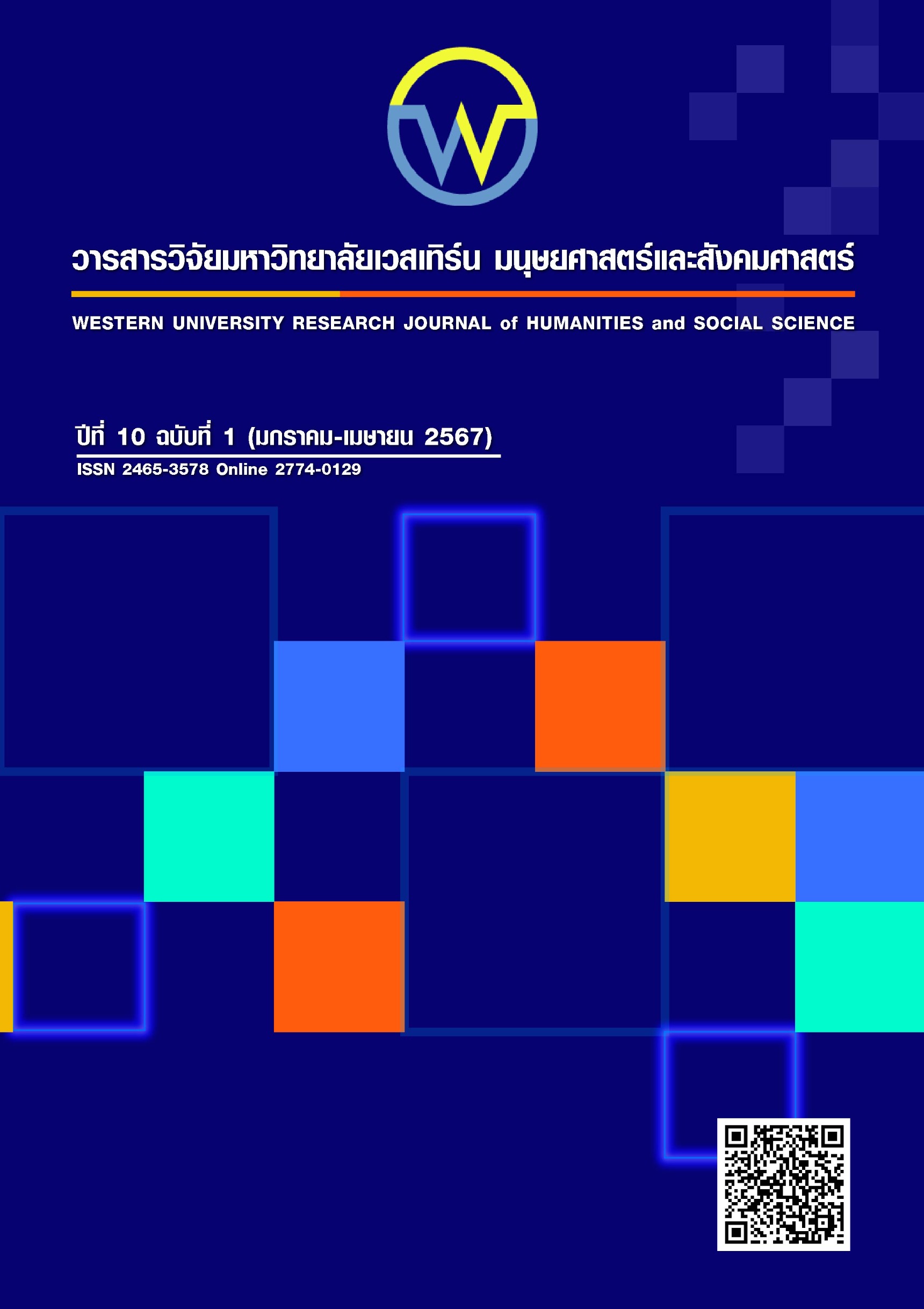ความพึงพอใจในฐานะปัจจัยเชื่อมโยงคุณภาพสินค้าและการยอมรับนวัตกรรมสู่พฤติกรรมในการบริโภคผลิตภัณฑ์อาหารเสริมเพื่อความงามของผู้บริโภค ในเขตกรุงเทพมหานคร
Main Article Content
บทคัดย่อ
บทความวิจัยนี้มีวัตถุประสงค์ 1) เพื่อศึกษาปัจจัยคุณภาพสินค้า การยอมรับนวัตกรรม ความพึงพอใจและการตัดสินใจซื้อผลิตภัณฑ์อาหารเสริมเพื่อความงามของผู้บริโภค 2) เพื่อศึกษาความพึงพอใจในฐานะตัวแปรคั่นกลางที่เชื่อมโยงคุณภาพสินค้าและการยอมรับนวัตกรรมสู่การตัดสินใจซื้อผลิตภัณฑ์อาหารเสริมเพื่อความงามของผู้บริโภค 3) เพื่อศึกษาความพึงพอใจที่ส่งผลต่อการตัดสินใจบริโภคผลิตภัณฑ์อาหารเสริมเพื่อความงามของผู้บริโภคในเขตกรุงเทพมหานครในพื้นที่กรุงเทพมหานคร การวิจัยครั้งนี้เป็นการวิจัยเชิงปริมาณ (Quantitative Research) เครื่องมือคือแบบสอบถาม ผู้วิจัยได้กำหนดขนาดของกลุ่มตัวอย่างจำนวน 385 ตัวอย่าง ตามสูตรของ Cochran (1963) ใช้วิธีการสุ่มตัวอย่างแบบง่าย (Simple Random Sampling) ค่าดัชนีความสอดคล้อง (IOC) อยู่ระหว่าง 0.67-1.00 ค่าสัมประสิทธิ์แอลฟาของครอนบัคระหว่าง 0.882 - 0.900 สถิติที่ใช้ประกอบด้วย ค่าความถี่ ค่าร้อยละ ค่าเฉลี่ย ส่วนเบี่ยงเบนมาตรฐาน และการวิเคราะห์สมการโครงสร้าง (SEM) โดยใช้โปรแกรม Smart PLS 3.0 ผลการวิจัยพบว่า 1) คุณภาพสินค้า นวัตกรรม ความพึงพอใจ และการตัดสินใจซื้อ มีค่าเฉลี่ยโดยรวมอยู่ในระดับมาก มีค่าเฉลี่ยเท่ากับ3.97 3.83 3.91และ4.37 ตามลำดับและส่วนเบี่ยงเบนมาตรฐานเท่ากับ 0.592, 0.783 ,0.695 และ 0.686 ตามลำดับ พบว่า ความพึงพอใจเป็นปัจจัยคั่นกลางที่เชื่อมโยงการยอมรับนวัตกรรม และคุณภาพสินค้าสู่การตัดสินใจซื้อโดยมีค่าผลคูณของขอบเขตล่างเท่ากับ 0.381 และ 0.250 ตามลำดับ และมีค่าผลคูณของขอบบนเท่ากับ 0.619 และ 0.554 ตามลำดับ
Article Details

This work is licensed under a Creative Commons Attribution-NonCommercial-NoDerivatives 4.0 International License.
References
กฤตกร หมั่นสระเกษ รําไพ หมั่นสระเกษ และเกวลี หมั่นสระเกษ. (2564). ชีวิตวิถีใหม่กับเทคนิคการดูแลตนเองเพื่อเสริมสร้างภูมิคุ้มกันในช่วงที่มีการระบาดของโรคโควิด-19. วารสารสุขภาพและการศึกษาพยาบาล, 27(1), 206-218.
เกียรติศักดิ์ ริบแจ่ม. (2566). พฤติกรรมการซื้อสินค้าวัสดุก่อสร้างและความพึงพอใจต่อปัจจัยส่วนประสมทางการตลาดบริการในการตัดสินใจซื้อสินค้าวัสดุก่อสร้างของลูกค้าร้านเกียรติศักดิ์อลูมิเนียมอำเภอโพธิ์ชัยจังหวัดร้อยเอ็ด. Journal of Modern Learning Development, 8(3), 122-133.
ณัฐณิชา ศิริประทุม. (2565). ความพึงพอใจของผู้บริโภค การติดแบรนด์ พฤติกรรมผู้บริโภคการสื่อสารแบบปากต่อปาก และการตลาดผ่านสื่ออินเทอร์เน็ตที่ส่งผลต่อการตัดสินใจซื้อสินค้าแฟชั่น ผ่านสื่อสังคมออนไลน์ของผู้บริโภคในกรุงเทพมหานคร. การค้นคว้าอิสระปริญญาบัณฑิตวิทยาลัย. มหาวิทยาลัยกรุงเทพ.
ดวงพร รัดสินทร. (2563). การรับรู้เทคโนโลยีที่มีผลต่อความตั้งใจใช้บริการการชำระเงินผ่านคิวอาร์โค้ด ของผู้บริโภคในเขตกรุงเทพมหานคร. สารนิพนธ์ปริญญาบริหารธุรกิจมหาบัณฑิต. มหาวิทยาลัยศรีนครินทรวิโรฒ.
ปิยธิดา จูคง. (2562). ส่วนประสมทางการตลาด คุณภาพการให้บริการ และการยอมรับนวัตกรรม และเทคโนโลยีที่มีอิทธิพลต่อการตัดสินใจเลือกผู้ให้บริการเครือข่ายโทรศัพท์เคลื่อนที่ในระบบ 5G ในกรุงเทพมหานคร. การค้นคว้าอิสระปริญญาบริหารธุรกิจมหาบัณฑิต. มหาวิทยาลัยกรุงเทพ.
รุ่งนภา บริพนธ์มงคล และ กฤษดา เชียรวัฒนสุข. (2563). การรับรู้คุณภาพสินค้าและคุณภาพการบริการที่ส่งผลต่อการตัดสินใจซื้อซ้ำเครื่องทำความสะอาดอุตสาหกรรม. Journal of Arts Management,4(1), 166-178.
Ayu, M. and Inderawati, R. (2019). EFL Textbook Evaluation: The Analysis of Tasks Presented in English Textbook. Teknosastik, 16(1), 21-25.
Cochran, W.G. (1977) Sampling Techniques. 3rd Edition, John Wiley & Sons, New York.
Hatta, I. H., Rachbini, W., & Parenrengi, S. (2018). Analysis of product innovation, product quality, promotion, and price, and purchase decisions. South East Asia Journal of Contemporary Business, 16(5), 183-189.
Tidd, Bessant and Pavitt. (2005). Managing Innovation: Integrating Technological, Market And Organizational Change. London, England, Wiley.

